- | 10:30 am
Why car companies should fear the golf cart
Automakers are churning out vehicles that are bigger and more expensive—but that might soon reach a breaking point.
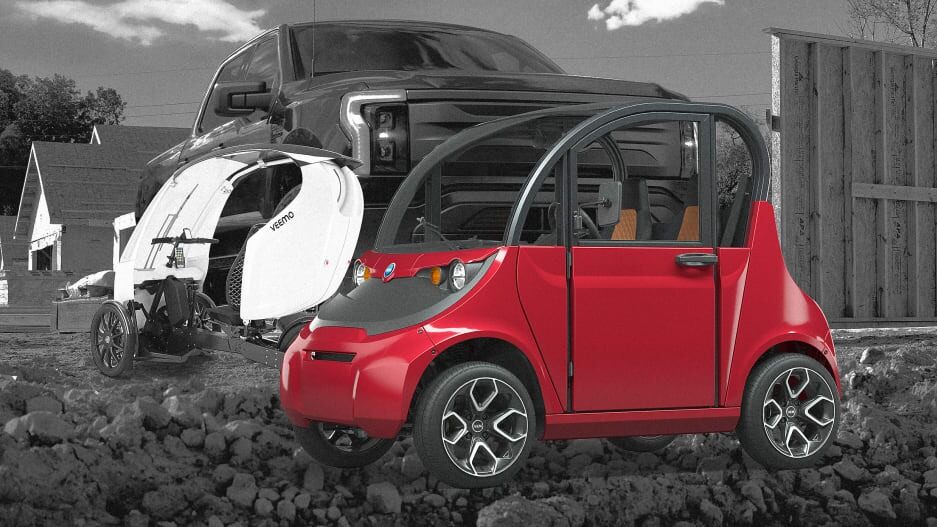
If you’re planning your first post-pandemic visit to a car dealership, you might want to brace for sticker shock.
A confluence of rising inflation, strained supply chains, and a global battery shortage pushed the price of an average new car to $48,301 in August, an all-time record and 10.8% more than a year ago. Those factors are largely outside automakers’ control, but another key factor is not: the shift toward ever-larger SUVs and trucks that now comprise some 80% of U.S. car sales. Smaller and more affordable models are rapidly disappearing; in the last few years, carmakers have discontinued dozens of sedan lines, including the Ford Taurus, Chevrolet Impala, and Volkswagen Beetle.
A century ago, Henry Ford supposedly quipped that Americans could choose any color they liked for their Model T, as long as it was black. Today, the U.S. is approaching a point when Americans can have any size car they want, as long as it’s gigantic. And they are going to pay more for all that heft.
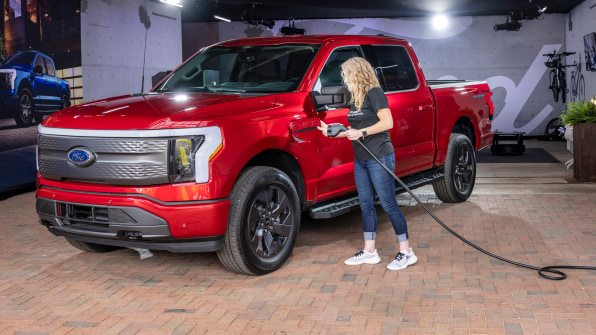
At its surface, this trend seems like a positive one for automakers. Big SUVs and trucks are typically more expensive and profitable than smaller models.
But car companies should take care. By raising prices and expanding vehicles’ girth, they make themselves vulnerable to a potent form of market disruption outlined in a classic business book 25 years ago.
How might emergent challengers to the automobile appear? In the seemingly innocuous form of a golf cart or e-cargo bike.
In 1997, Harvard Business School professor Clay Christensen published The Innovator’s Dilemma, among the most influential business books of the last 30 years. Christensen wrote that his book was an explanation of “well-managed companies that have their competitive antennae up, listen astutely to their customers, invest aggressively in new technologies, and yet still [lose] market dominance.”
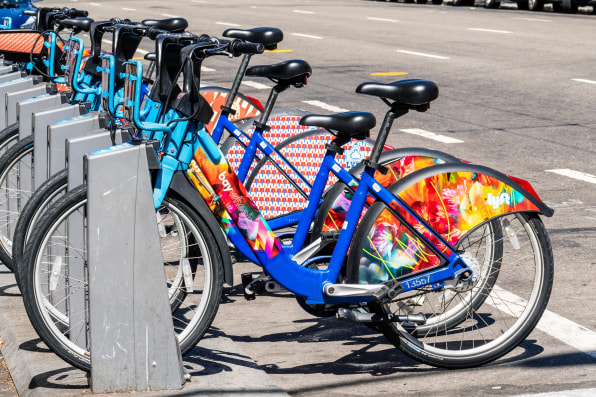
Christensen described a recurring pattern that enabled upstarts to topple market leaders. The basic process worked like this:
Seeking to improve, an industry’s dominant players ask customers what new features they most want. Those customers request a product that’s bigger and better (and often pricier), but generally similar to what’s already available. The market leaders subsequently direct their R&D efforts toward fulfilling those modest requests, and the cycle repeats itself—leading to products that incrementally grow more sophisticated.
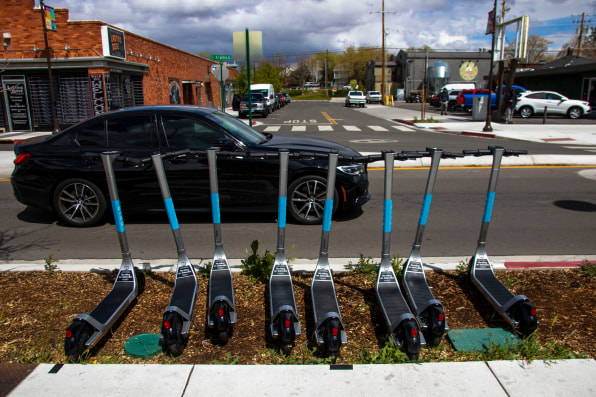
Then something seemingly inconsequential happens: A new company arrives with a fundamentally different product, one that offers much less performance at a lower price. Industry leaders scoff at the new competitor and its janky offering. But that inferior product turns out to be “good enough” to attract a smattering of price-conscious customers—a few of whom are delighted by the innovative design, even with its limited functionality. The challenger now has a toehold in the market and an opportunity to learn.
Gradually, the challenger leverages its improving performance and lower price to attract new customers. By the time the incumbents realize they face a mortal threat, it’s too late. They’ve lost too much market share, and they don’t have the time or expertise necessary to compete in a transformed market. They’re soon finished, and the challenger becomes the incumbent.
Not every market evolves along the trajectory Christensen described, but many do. A frequently cited example is the process through which Netflix dethroned Blockbuster, the dominant video rental chain of the 1990s. Netflix’s initial DVDs-by-mail product was of marginal interest to most Blockbuster customers, who happily checked out video tapes at retail locations. But fans of obscure movies valued Netflix’s extensive selection and didn’t mind waiting to get a DVD. They gave Netflix enough early revenue to develop streaming capabilities that Blockbuster ultimately could not match. Blockbuster filed for bankruptcy in 2010. (Spiking the football, Netflix is now releasing a new comedy series about the last Blockbuster store.)
Christensen famously called this process “disruption,” a term now so widespread that it has morphed into a cliché. (A 2014 headline read, “Disruptive mayo is now a thing, and it’s spreading.”) Christensen died in 2020, but his ideas continue to reverberate within Silicon Valley’s boardrooms and kombucha bars. Time, Business Insider, and the World Economic Forum have placed The Innovator’s Dilemma on their lists of all-time business books.
Christensen later turned his attention toward investigating innovation in the largest industries, including the automotive sector that represents around 3% of U.S. GDP. In particular, Christensen and his colleagues wanted to see whether Tesla really was as disruptive as its boosters claimed.
Their conclusion: an emphatic No. Rather than creating a new, low performance product to undermine incumbents, Tesla was providing “incrementally better performance at a higher price,” which Christensen labeled a sustaining innovation rather than a disruptive one.
But during their research, Christensen and his team uncovered a different kind of vehicle, one that possessed the disruptive potential that Tesla lacked. According to a 2015 story in the Harvard Business Review, such a machine looks and functions nothing like a contemporary car. Instead, it “resembles a souped-up golf cart.”
In the 2010s, Horace Dediu was part of Christensen’s team exploring innovation within the auto sector. “Cars are more than good enough,” he told me recently. “There’s no point in making them better. Let me know when you’ve developed a worse car.”
“Micromobility,” he said, “is a worse car.”
Dediu is often credited with coining this term micromobility, which encompasses bikes, scooters, and cargo bikes. While bikes and scooters have been around for well over a century, the addition of small electric batteries has been a revelation, letting riders comfortably handle steep hills and muggy weather (e-cargo bikes are especially helpful when lugging groceries or children).
Virtually all micromobility devices cost a few thousand dollars or less, a tiny fraction of a new car. The same holds true for an emergent class of electric, four-wheeled low-speed vehicles that resemble golf carts—larger than a micromobility device but still smaller and slower than a car.
While few people embarking on a long journey would choose an e-bike or a golf cart over a car, many Americans might do so for the roughly 60% of trips that are under six miles. Beyond the opportunity to save money, using a golf cart or e-bike in lieu of a car makes it easier to find parking and offers a chance to enjoy the open air (and perhaps burn a few calories). Few small vehicles can exceed 25 mph, but downtown traffic in many dense cities seldom moves much faster than that.
Numerous aspects of small vehicles align neatly with Christensen’s theory of disruption, including their affordability and lower performance compared to full-size cars, as well as a rabid early fanbase. Consistent with The Innovator’s Dilemma, initial purchases of e-bikes, golf carts, and similar vehicles provide revenue that allows manufacturers to invest in building better models—which can attract new customers enticed by improving performance and the enormous cost differential between a car and a small vehicle.
The size of that gap keeps widening. Denver recently became the first city to offer all residents a rebate of up to $1,700 on a new e-bike or e-cargo bike, and states including Connecticut and California are preparing to follow Rhode Island with their own programs. Meanwhile, automakers are increasing prices at a time when interest rates are surging. The average monthly U.S. car payment recently topped $700 for the first time ever.
As they grow more expensive, U.S. cars are also getting bigger, which accentuates their urban disadvantages (have fun squeezing your elephant-length Ford F-150 Lightning into a downtown parallel parking spot). Again, this is a trend likely to compel more people to wonder whether a small vehicle might be “good enough” to replace at least one of their family’s cars. Disruption of the automobile market is becoming easier to fathom.
Dediu believes that evolving lexicons will be a telltale sign. “It’s over when language shifts,” he said, “when people—especially young people who are edgy and cool—start talking about ‘scooting’ and ‘riding,’ activities that have nothing to do with cars.”
If carmakers are aware of this threat, most of them aren’t showing it. Although a few foreign-based competitors like BMW and Porsche are developing their own e-bikes, American heavyweights GM and Ford are actually moving away from small vehicles. A year after killing its nascent effort to build an e-bike, General Motors launched the Hummer EV, a behemoth weighing over 9,000 pounds and costing over $112,000. Earlier this year, Ford unloaded its Spin shared e-scooter division to Tier, and the company has pivoted fully toward SUVs and trucks, ceasing all sedan sales in the U.S.
U.S. auto executives seem to be all-in on cars, the bigger and pricier the better. Of course, they could argue that they’re merely delivering what their customers request: models that are larger and fancier versions of what they already have.
Viewed through Christensen’s theory, that mentality makes carmakers look like sitting ducks.
Consumer preferences are already showing signs of shifting. In the U.S., more e-bikes are now sold than electric cars; two months ago, a Wall Street Journal headline proclaimed, “The Hottest New Car on the Market is an E-Bike.” Social media is full of testimonials from people riding one instead of driving.

Golf carts—already ubiquitous in suburban enclaves like The Villages, Florida, and Peachtree City, Georgia—are popping up in places like Scottsdale, Arizona, and downtown Tampa. The new manufacturer of the GEM, one of the most prominent low-speed vehicles, is shifting toward selling directly to consumers in addition to institutional customers, with new user-friendly designs under development—exactly the kind of product improvement that Christensen described among disruptive market challengers.
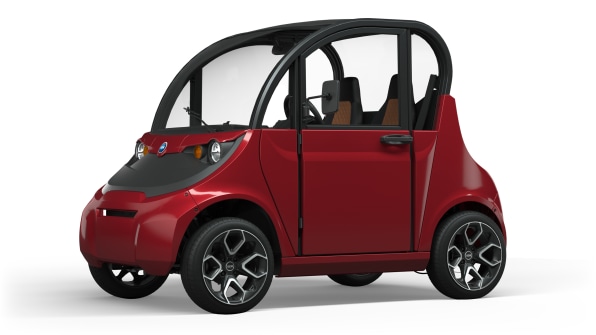
Notably, the GEM comes with climate control and windows, providing protection from unpleasant weather. That addresses one of the criticisms most frequently lobbed by small-vehicle skeptics. Other startups are developing miniature three-wheeled vehicles equipped with a shell to shield occupants from the elements.
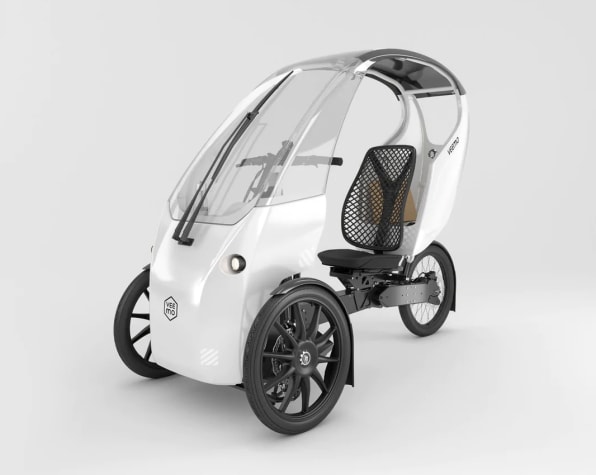
A tougher challenge is the shortage of safe places in the U.S. to ride or drive a small vehicle after a century of car-centric roadway design. States like Massachusetts ban bikes and low-speed vehicles from faster roads and highways, and even if they didn’t, few people would feel comfortable using a golf cart or e-cargo bike alongside cars going 45 miles per hour. But with the growing popularity of the “20 is Plenty” urban speed campaigns, small vehicles can move at the pace of traffic. And retrofitting existing streets is time-consuming but entirely possible, as demonstrated by the growth of protected bike lanes in U.S. cities over the last decade. That trend shows no sign of abating; The District of Columbia has committed to building a record 10 miles of new protected lanes this year, and Boston Mayor Michelle Wu recently committed to expanding the city’s bike-lane network so that half of all residents live within a three-minute walk of a protected lane by 2025.
Still, no one should expect cars to go the way of the dodo anytime soon. Even in Peachtree City, which has almost as many registered golf carts as it does households, residents still use cars to drive into Atlanta (27 miles away) and to take longer trips. But—crucially—a golf cart can take the place of a second or third vehicle, which otherwise might have been a car.
In the U.S., there are around 1.4 cars for every adult. If just 25% of families swapped their second or third car for a small vehicle, that would represent an earthquake for the automotive industry. In September, C-suite whisperer McKinsey published a report arguing that “minimobility” could become a $100 billion global market by 2030.
The prospect of a rapid shift toward small vehicles should be keeping auto executives awake at night. But from a societal perspective, it could be a dream come true.
Because of their modest size, small vehicles pose far less danger than an SUV or truck in a collision, particularly to those walking or biking (whose deaths have been skyrocketing in the U.S.). Building and charging small vehicles generates significantly fewer emissions than even electric cars. Better yet, an e-cargo bike or low-speed vehicle requires a tiny fraction of the battery cells needed to power an EV, freeing up scarce materials like lithium and nickel for use in other EVs, speeding the transition from fossil fuels.
As an added bonus in these politically polarized times, small vehicles might actually make our neighborhoods a bit friendlier. Don’t take my word for it: Peachtree City Mayor Kim Learnard previously told me that people driving golf carts in her community frequently stopped to chat with neighbors mowing their lawn. “You’re never going to do that if you’re in a car,” she said.
A disruption of the U.S. car market could be catastrophic for automakers. But for the rest of us, it would be cause for celebration.






































